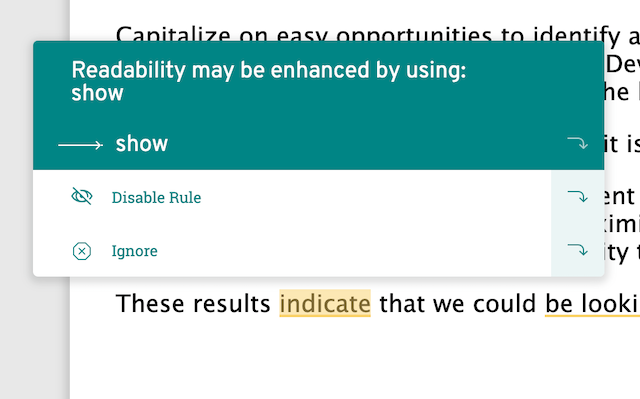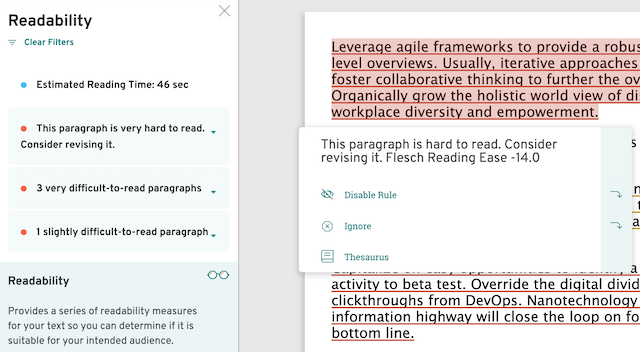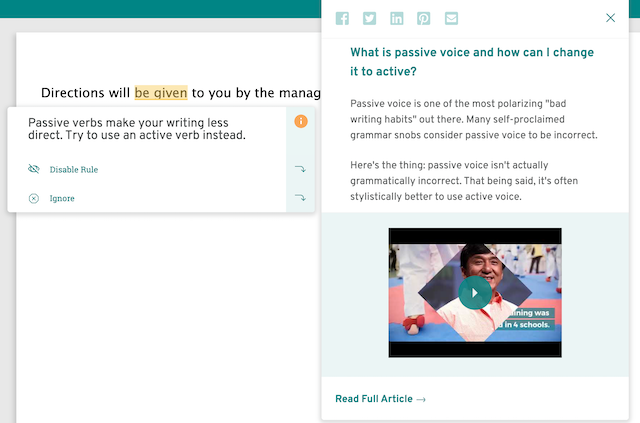
Back in 2015, the Supreme Court ruled that Airbnb hosts and guests would start paying hotel tax – a lot of money. Airbnb was understandably angry, as it doesn’t classify itself as a hotel service.
In retaliation, the company created a passive-aggressive advertising campaign. It put up ads in San Francisco telling the city what it should do with all the Airbnb tax money.
One advert read, “Dear Board of Education, please use the $12 million in hotel taxes to keep art in schools.”
The ads made Airbnb look very unprofessional. Airbnb CEO Brian Chesky actually said later on, “They made us look like jerks.”
Tone plays a huge role in written communication, which is a major part of business operations. While negotiations and networking form the foundation of corporate engagement, all final agreements are written. Any content created for business purposes must be outstanding because of its critical nature. If it falls short, the consequences can be very costly.
When you use the right tone, your writing can transcend the words. People usually remember something they read because of the tone. Whether you’re writing an email, a tweet, or a blog post, the tone helps define the message. ProWritingAid ensures you use the right tone every time.
What Is Tone in Business Writing?
Tone refers to the mood implied by your word choice and how your text makes the reader feel.
The tone you use when writing can evoke different emotions and perspectives. The overall tone of your written text affects a reader, just as your tone affects a listener when you’re talking.
How Does ProWritingAid Improve Tone in Writing?
It Boosts Your Confidence
In business writing, confidence is everything. But it may not come naturally if you feel intimidated by your audience or out of your depth. ProWritingAid helps remove hedging language, which often suggests uncertainty. It identifies unnecessary words that you can remove from sentences to improve readability.
Frequent culprits include:
- I suppose
- I think
- Probably
- Usually
- Most likely
- Seem
- Look like
- Appear to be
- Indicate
- Suggest
When you write confidently, it’s easy to persuade your audience. The readers will notice your confidence and will be more likely to accept your proposition. Investors are also more inclined to work with businesspeople who are confident and certain of their abilities.

ProWritingAid prompts you when you use vague language so you can make sure you’re not hiding your key points behind uncertain language.
To increase your confidence, become more knowledgeable about the topic you’re writing on. Also, prepare any materials beforehand. But do not try to appear overconfident, as you may come off as arrogant and proud.
You Write at the Right Difficulty Level
If you’re used to writing technical documents all day, it’s very easy to use complex words. In fact, you may not even realize that your writing is technical until someone points it out. You should write for an audience with a ninth grade reading level. Do not use complex terms or phrases the readers will not understand.
Keep your readers in mind throughout the entire writing process. If you are writing for experts and specialist readers, you can use some jargon and technical language – it may even be necessary. But if you’re writing for a general audience or people who are not knowledgeable about your industry, use simple language.
ProWritingAid’s Readability Report shows how easy or hard your content is to read.

It highlights complex paragraphs in red so you can quickly make the necessary changes. You will also see a numerical score based on the Flesh-Kincaid Reading Ease Test. The higher the score, the easier your document is to read. Aim for a score of 60 and above.
The Reader Clearly Understands the Message
The most important thing when writing any business-related material is to focus on the reader. Don’t think about the targets you have to meet or how your new product hasn’t taken off. Tell the reader about the benefits of the product or service and how it will solve their problem. Use words that show urgency and tap into emotion.
Our writing app flags weak verbs and adverbs and suggests stronger ones as replacements. If you’re marketing your new product, you may write, "Our new app is good and will change the way you live." ProWritingAid will suggest that you replace the word "good" with "excellent" or "wonderful."
Some words you can use to emphasize the benefits of your products or services include:
- Explosive
- Epic
- Unconventional
- Obsession
- Bold
- Daring
- Tempting
- Pioneering
Put yourself in the reader’s shoes and write from their perspective. Do not think about what they can do for you, but what you can do for them. When someone reads a piece of writing, they usually think, "What’s in it for me?" Explain to the reader how they will benefit.
You Use the Active Voice
Your high school English teacher, online writing resources, and all business writing books have one thing in common: they hate the passive voice. Even Microsoft Word underlines passive constructions in red.
The passive voice is not grammatically incorrect and you won’t be considered a subpar writer if you use it. But it has one big shortcoming: it delivers messages very poorly.
With passive voice, the verb acts upon the subject. For example, you may write, "All employees are required by the organization to watch a safety video every year." However, with active voice, the subject carries out the action stated by the verb. So, the above sentence would be, "The organization requires all employees to watch a safety video every year."
When you use the active voice, your sentences have a direct and clear tone. The passive voice is weaker and subtler and makes your writing look drab. Passive sentences are longer, indirect, and impersonal. ProWritingAid quickly points out passive sentences, prompting you to change them to active ones. The Style Report highlights all passive verbs and sentences.

A lot of business communication can be strengthened by abandoning the passive voice. For example, if you’re responding to a client's email about a complaint, don’t write, "A mistake was made and your account was disconnected, but attempts have been made to rectify it." Instead, write, "We made a mistake and disconnected your account, but we have rectified it."
While the first sentence is not incorrect, it sounds a bit dishonest and evasive as no one wants to take responsibility. Would you want to do business with a company that does not take full responsibility for its mistakes? The obvious answer is "no."
Here’s a quick tip: to change sentences written in the passive voice to active voice sentences, simply identify the subject.
The Importance of Tone in Business Writing
When you were young and opinionated, your dad might have told you, "Don’t you dare use that tone with me." Tone plays an important role in spoken and written communication. Your writing tone conveys a specific message and affects the reader positively or negatively. It also determines how the reader receives the message.
Here’s how the right tone helps in business writing:
- It ensures you relate better to your readers’ emotions, wants, needs, and interests. The more you connect with them, the more they will engage with your content.
- It is persuasive. Tone directly influences your audience's reaction. If you use an angry tone when writing about your competitor’s unethical sourcing, the readers may also become angry. They may start to buy your products because you use ethical sourcing methods. However, if you write about the unethical sourcing in an informative, factual manner, your content may not elicit the same angry response.
- It triggers the emotion that causes people to make a buying decision. We are emotional creatures and make decisions based on emotion and not logic.
Two Questions You Should Ask Yourself to Ensure You Use the Right Tone
1. Who Am I Writing To?
To write effective business content, you must know your readers. Are you addressing a single reader or multiple readers? How much knowledge do they have on the subject? What issues concern them most? These are some of the questions you need to ask yourself before you start writing.
When you know who your audience is, you can choose an appropriate tone for your content – one that will cause the reader to respond how you want. For instance, when you're writing an email to an unhappy client, you must be empathetic and show you have their best interests at heart.
2. What’s the Purpose of the Content?
Your reason for writing that email, tweet, or LinkedIn post is closely tied with knowing your readers. Are you writing to employees about adopting a new business practice? Are you informing customers about a new company policy? When you know the purpose of the message, you can determine the writing tone to use. You won’t send a patronizing memo or a rude email.
Remember, people can be as sensitive to attitudes conveyed in writing as they are to verbal ones. Subtle differences in words or punctuation can change the tone of your content. Choose the best tone based on your audience.


